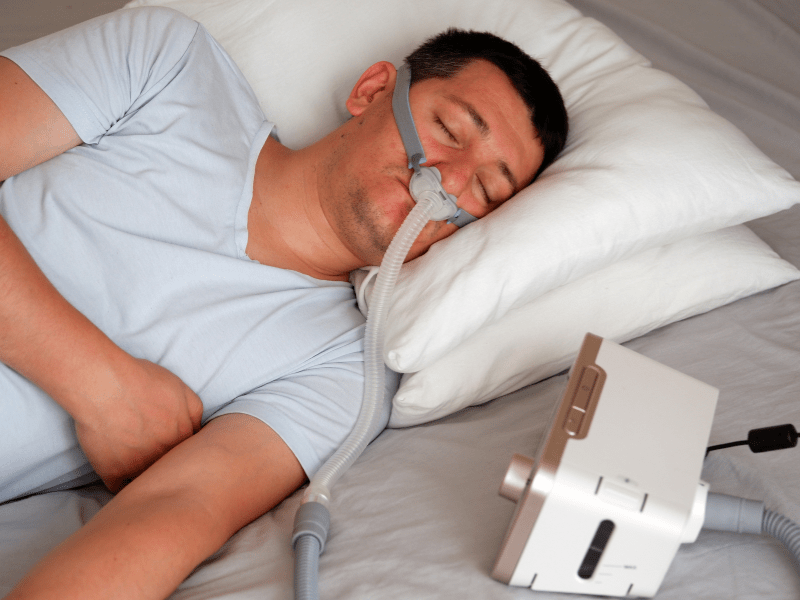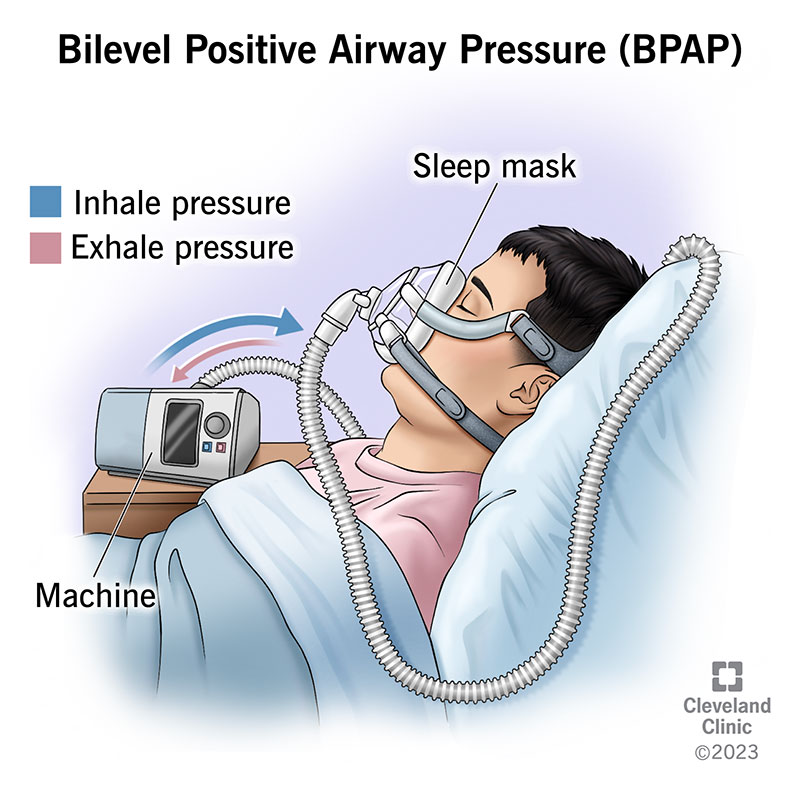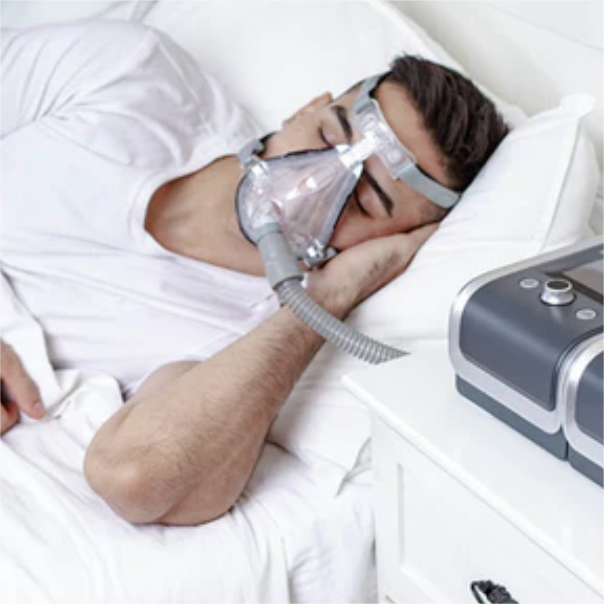Premier BiPAP Rental Firms You Can Depend On
Premier BiPAP Rental Firms You Can Depend On
Blog Article
Bipap vs. CPAP: Which Is the very best for Your Sleep Problem?
When navigating the complexities of sleep conditions, the selection in between BiPAP and CPAP therapy is a critical consideration. Each technique supplies special advantages tailored to particular problems, yet the choice hinges on individual patient demands and convenience levels. While CPAP offers a consistent air movement ideal for obstructive sleep apnea, BiPAP's double pressure settings might enhance comfort for those with even more complex respiratory problems. Recognizing these distinctions can significantly impact treatment efficiency, leaving one to ponder which option truly straightens with their health and wellness needs and lifestyle.
Recognizing Rest Disorders
Rest conditions encompass a variety of problems that interrupt regular rest patterns, influencing both the top quality and period of remainder. These disorders can materialize in numerous forms, consisting of sleeping disorders, rest apnea, narcolepsy, agitated leg syndrome, and parasomnias. Each problem offers unique difficulties, typically bring about substantial daytime fatigue, cognitive impairment, and psychological disturbances.
Sleeping disorders is characterized by difficulty dropping or staying asleep, while rest apnea involves duplicated interruptions in breathing throughout sleep, frequently leading to fragmented rest. Narcolepsy, on the other hand, is marked by extreme daytime drowsiness and sudden sleep assaults. Restless leg syndrome creates unpleasant feelings in the legs, motivating an irrepressible desire to relocate them, which can additionally hinder the ability to go to sleep.
The impact of rest disorders prolongs past individual health and wellness, affecting total productivity, connections, and lifestyle. Comprehending the specific nature of each disorder is vital for efficient medical diagnosis and treatment. As sleep health and wellness comes to be progressively recognized as an essential element of general health, addressing these disorders is vital for boosting both sleep quality and everyday functioning.
Exactly How CPAP Works
Continual Favorable Air Passage Pressure (CPAP) therapy is often employed as a main therapy for obstructive sleep apnea (OSA) The device of CPAP includes making use of a maker that provides a steady stream of air via a mask worn during sleep. This air flow preserves positive pressure in the air passage, protecting against the collapse or blockage of the throat that can take place during sleep.
When an individual takes in, the CPAP device provides a constant flow of air, ensuring that the respiratory tract stays open - BiPAP Rental. This not only reduces the signs and symptoms of OSA, such as snoring and disrupted rest patterns, yet also decreases the associated wellness risks, consisting of cardio issues and daytime fatigue
The pressure setups on a CPAP machine can be personalized to satisfy specific client requirements, frequently established via a rest research. Individuals typically undertake titration research studies to discover the optimum stress level for their special problem. Normal follow-up and modifications may be needed to make certain effectiveness and comfort. On the whole, CPAP treatment has actually been shown to considerably boost the top quality of rest and general wellness for individuals enduring from obstructive sleep apnea.
Just How BiPAP Works
BiPAP, or Bilevel Favorable Airway Pressure, is a specialized form of non-invasive air flow that is particularly valuable for patients with conditions such as complicated sleep apnea or respiratory conditions. Unlike CPAP, which provides a constant stream of air at a solitary pressure, BiPAP provides 2 unique stress settings: a greater inspiratory stress for breathing Discover More and a lower expiratory stress for exhalation. This dual-pressure method allows for much easier breathing, minimizing the effort called for throughout exhalation.
The gadget operates through a mask fitted over the nose or mouth, attached to an equipment that creates atmospheric pressure. When the client inhales, the maker delivers the higher pressure to aid with air flow, ensuring that the respiratory tract continues to be open. Upon exhalation, the maker instantly decreases the stress, making it extra comfortable for the individual to breathe out.

Trick Differences Between BiPAP and CPAP

In contrast, BiPAP (Bilevel Favorable Airway Pressure) provides 2 different stress settings: one for inhalation and a lower one for exhalation. This dual stress system enables even more comfortable breathing, specifically for individuals that battle with exhaling versus a constant pressure. BiPAP is typically suggested for individuals with complex sleep apnea, persistent obstructive lung illness (COPD), or those that need additional support during sleep.
Additionally, the complexity of BiPAP tools typically causes a higher cost and calls for more mindful titration than CPAP. BiPAP Rental. Comprehending these key distinctions can aid in recognizing which device might be more ideal for particular sleep problems, setting the groundwork for enlightened therapy decisions
Choosing the Right Therapy
The choice between BiPAP and CPAP treatment mostly pivots on the specific characteristics of the sleep condition, the person's overall wellness, and their comfort with the gadget. CPAP, which provides a continuous stream of air, is commonly prescribed for obstructive sleep apnea (OSA)
Alternatively, BiPAP provides two levels of pressure: one for inhalation and a reduced one for exhalation. This double pressure system is helpful for patients with intricate sleep apnea or those who experience problem breathing out versus a continual pressure. Additionally, BiPAP is commonly suggested for people with breathing conditions, such as chronic obstructive lung illness (COPD), where differing pressure setups can improve convenience and conformity.
Ultimately, a comprehensive assessment by a rest expert, including a rest study, can assist determine which treatment straightens best with the person's needs. Aspects such as convenience, simplicity of use, and specific medical problems should likewise be thought about to optimize treatment results.
Conclusion
In summary, both BiPAP and CPAP serve unique functions in the monitoring of sleep problems. CPAP is effective for obstructive sleep apnea through consistent air flow, while BiPAP provides double stress setups that improve comfort for those with intricate rest apnea or respiratory problems. The option between these therapies ought to be directed by private requirements and problems, necessitating a comprehensive assessment by a sleep specialist to ensure ideal treatment results and improved quality of rest.

In general, CPAP therapy has actually been revealed to considerably enhance the top quality of rest and overall health and wellness for people suffering from obstructive sleep apnea.
BiPAP is typically recommended for patients with intricate sleep apnea, chronic obstructive pulmonary disease (COPD), or those who need added assistance throughout sleep.
CPAP is effective for obstructive sleep apnea through constant air movement, while BiPAP offers double pressure settings that improve convenience for those with complicated rest apnea or respiratory system concerns.
Report this page